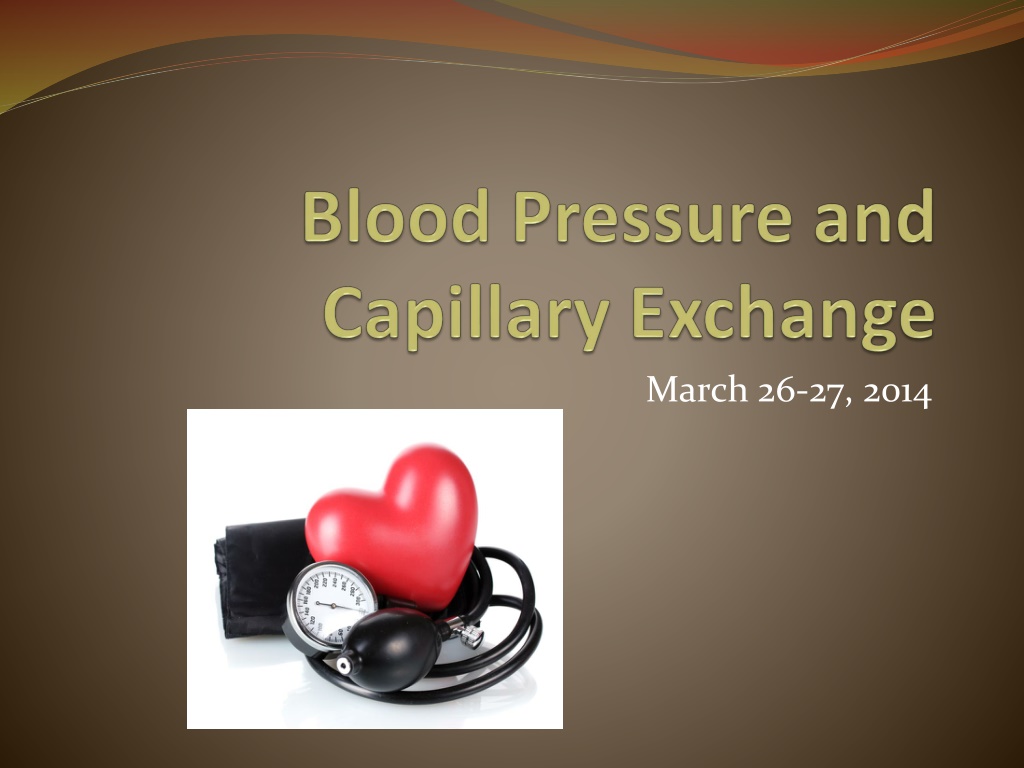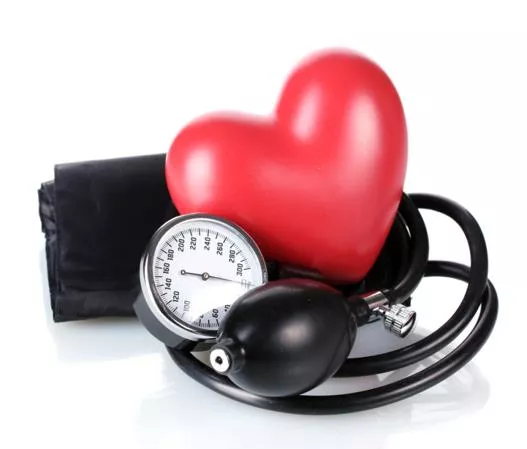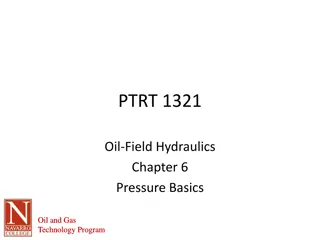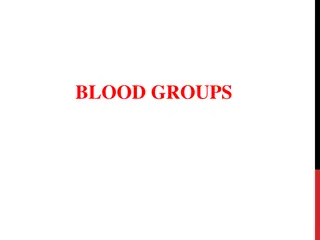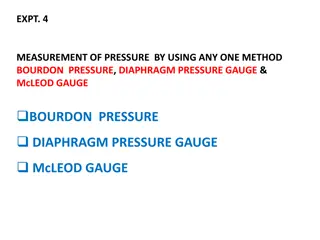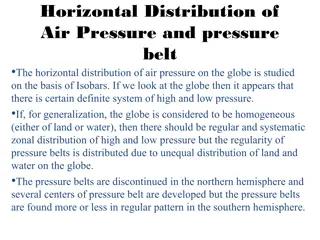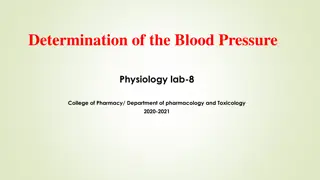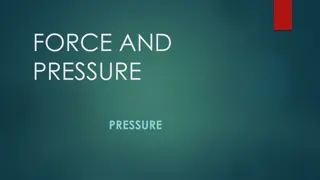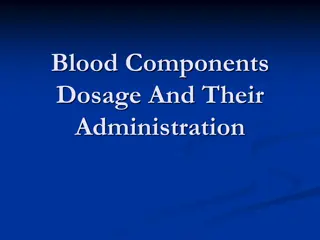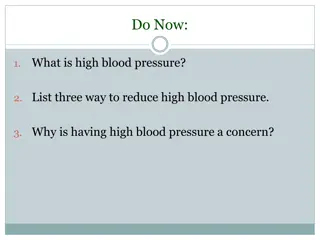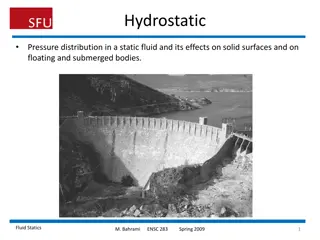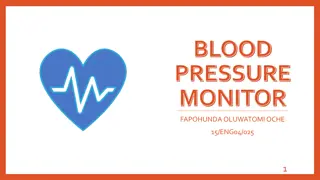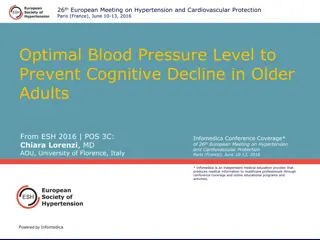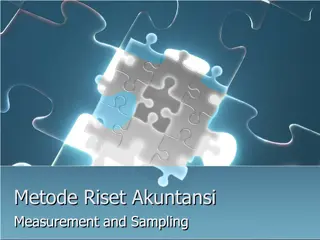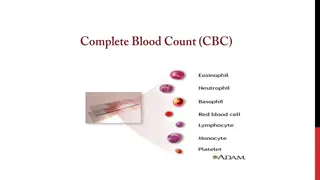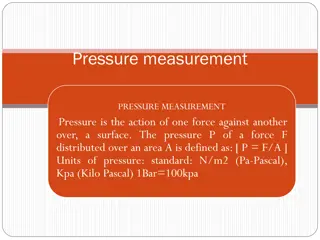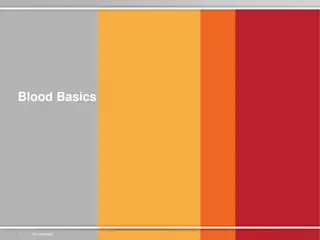Blood Pressure: Facts and Measurement
Learn about pulse points, pressure points, and how to measure blood pressure accurately. Discover the reasons for blood pressure variations and the importance of systolic and diastolic pressures. Explore the process of measuring blood pressure using a sphygmomanometer and understanding Korotkoff sounds.
Download Presentation

Please find below an Image/Link to download the presentation.
The content on the website is provided AS IS for your information and personal use only. It may not be sold, licensed, or shared on other websites without obtaining consent from the author.If you encounter any issues during the download, it is possible that the publisher has removed the file from their server.
You are allowed to download the files provided on this website for personal or commercial use, subject to the condition that they are used lawfully. All files are the property of their respective owners.
The content on the website is provided AS IS for your information and personal use only. It may not be sold, licensed, or shared on other websites without obtaining consent from the author.
E N D
Presentation Transcript
Pulse Points Areas where can easily feel pulse Also act as pressure points. Compressing these points will reduce downstream blood flow useful when dealing with major wounds. Try to find several of these!
Blood Pressure Blood pressure is the pressure the blood exerts against the inner walls of the blood vessels. Usually, we refer to the pressure of the arteries.
Blood Pressure Blood pressure is the pressure the blood exerts against the inner walls of the blood vessels. Usually, we refer to the pressure of the arteries. Why does blood pressure drop so low in the capillaries? 1) Because there are so many more capillaries 2) So that the flow of blood will slow to facilitate exchange of materials
Blood Pressure Blood pressure is the pressure the blood exerts against the inner walls of the blood vessels. Usually, we refer to the pressure of the arteries. Why do we record blood pressure as two numbers? Blood pressure in the arteries fluctuates with the cardiac cycle.
Blood Pressure Systolic pressure occurs due to ventricle contraction Diastolic pressure occurs when ventricles relax http://www2.estrellamountain.edu/faculty/farabee/BIOBK/cardiaccycle.gif
Measuring Blood Pressure 1. A sphymomanometer is placed over the brachial artery. 2. The cuff is inflated to ~150 mmHg (above systolic pressure) 3. Air pressure is slowly released from cuff while a stethoscope is used to listen for Korotkoff sounds in the artery.
Measuring Blood Pressure Test yourself! (Start at ~3:30) Korotkoff sounds Cuff pressure > systolic pressure there is no blood flow through artery NO SOUNDS Cuff pressure = systolic pressure blood begins to flow turbulently through artery TAPPING SOUND BEGINS Cuff pressure = diastolic pressure blood begins to flow smoothly SOUNDS DISAPPEAR
Factors which affect BP Increased cardiac output (heart rate & stroke volume) increases blood pressure Exercise Stress / Sympathetic nervous system Increased peripheral resistance (friction of blood traveling through vessels) increases BP Atherosclerosis Constriction of blood vessels (due to sympathetic nervous system, cold, chemicals such as nicotine) Number of vessels (body size / fat / pregnancy) Increased blood volume increases blood pressure Kidney problems Which factors will decrease BP?
Resting Blood Pressure Hypotension is low blood pressure. May cause dizzy spells, especially when rising Not problematic among young, healthy people Acute hypotension may indicate shock
Hypertension can be a positive feedback cycle why? Resting Blood Pressure Hypertension is high blood pressure. Damages blood vessels, which may lead to clots and atherosclerosis Causes heart to work harder, leading to enlarged heart that will eventually weaken
Capillary Exchange Capillary exchange is the movement of substances (water, gases, nutrients, wastes, etc.) between capillaries and the interstitial fluid of tissues Capillaries have special features which increase their permeability: Intercellular clefts: spaces between cells Fenestrations: very thin membrane- covered spots, or pores
Capillary Exchange Capillary exchange is the movement of substances (water, gases, nutrients, wastes, etc.) Capillaries have special features which increase their permeability: Clefts and fenestrations are most important for the diffusion of what kinds of substances? Intercellular clefts: spaces between cells Water, and other lipid-insoluble substances Fenestrations: very thin membrane -covered spots, or pores What can get through without their help? O2, CO2, fats
Capillary Exchange Capillary exchange is the movement of substances (water, gases, nutrients, wastes, etc.) Capillaries have special features which increase their permeability: What type of capillaries don t have fenestrations or intercellular clefts? Intercellular clefts: spaces between cells Capillaries in the brain work with astrocytes to form blood-brain barrier Fenestrations: very thin membrane -covered spots, or pores
Capillary Exchange Differences in pressure in blood pressure and osmotic pressure help fluids move out of capillaries at the arterial end and into capillaries at venous end. Watch me!
Closure What was our objectives, and what did we learn? What was our learner profile trait and how did we demonstrate it? How does what we did today tie to our unit question?
